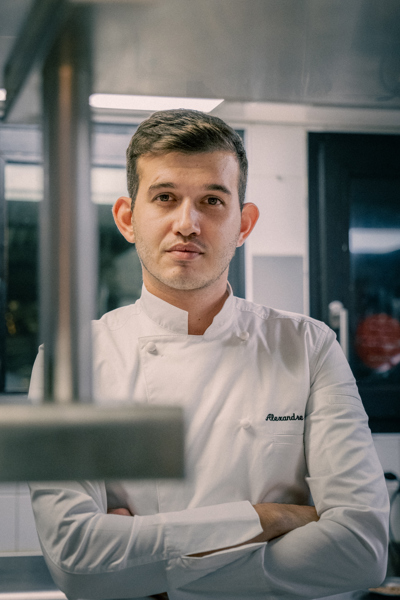QUICK FIRE QUESTIONS
If you could only eat one food for the rest of your life, what would it be?
Cheese.
Which ingredient couldn’t you go without?
Vinegar.
What dish do you make for your friends when they come round for dinner?
A hearty dish, like Beef Wellington.
If you met someone who had never tasted French cuisine, which dish would you impress them with?
Blanquette de veau (veal stew) with rice pilaf.
If you yourself were an ingredient, which one would you be and why?
Vinegar, because it adds some zing to anything bland.
Which is your favourite word in the culinary dictionary?
Pickling.
Are you a night owl or an early bird?
A night owl who gets up early.
How would you describe your profession in one word?
Sharing, emotions, and lifelong learning are the essence of the job.
Sea, countryside or mountain?
Why choose?
What’s your favourite travel destination and your dream destination?
It’s not the destination that counts, it’s whom you go there with.
One word to finish on:
Passion.
If you could only eat one food for the rest of your life, what would it be? Cheese.
Which ingredient couldn’t you go without? Vinegar.
What dish do you make for your friends when they come round for dinner? A hearty dish, like Beef Wellington.
If you met someone who had never tasted French cuisine, which dish would you impress them with? Blanquette de veau (veal stew) with rice pilaf.
If you yourself were an ingredient, which one would you be and why? Vinegar, because it adds some zing to anything bland.
Which is your favourite word in the culinary dictionary? Pickling.
Are you a night owl or an early bird? A night owl who gets up early.
How would you describe your profession in one word? Sharing, emotions, and lifelong learning are the essence of the job.
Sea, countryside or mountain? Why choose?
What’s your favourite travel destination and your dream destination? It’s not the destination that counts, it’s whom you go there with.
One word to finish on: Passion.












